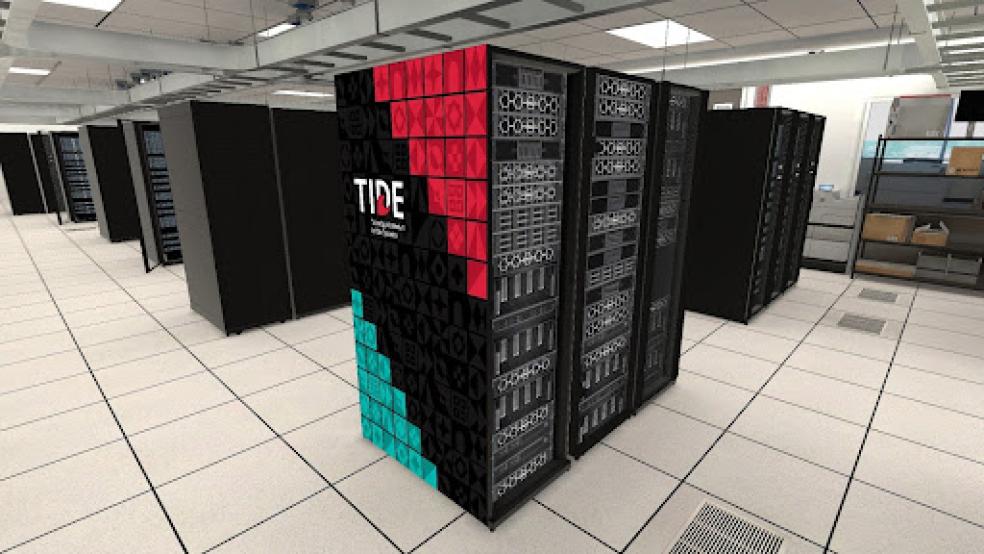
The Technology Infrastructure for Data Exploration (TIDE) project, backed by a $991,749 grant from the National Science Foundation’s Office of Advanced Cyberinfrastructure, will use high-performance graphical processing computing servers to expedite artificial intelligence and machine learning calculations, which previously required days to complete on less powerful machines.
“Researchers at Cal Poly Humboldt have long been limited by their access to computational resources. The TIDE grant will allow for increased access and support for our faculty and students and will change how we process data and achieve new insights,” says Cal Poly Humboldt’s Chief Information Officer of Information Technology Services, Bethany Gilden.
In addition to purchasing new equipment, the grant aims to broaden access to high-performance computing (HPC) by providing high-quality training to staff, faculty, and student researchers.
Nearly 700 new computing cores, purchased from Dell Technologies, will be housed at SDSU's Campus Data Center but accessible to collaborators at an initial set of seven institutions—including researchers from Cal Poly Humboldt, CSU San Bernardino, and Stanislaus State—who are part of the TIDE project team.
Access to these advanced computers and their faster analysis will enable researchers to identify antibiotic-resistant tuberculosis strains, program robots to be more human in their interactions, and digitally reconstruct archeological artifacts.
Installation and setup are expected to be complete by April 2024, with researchers gaining access in May 2024.
TIDE will fund support staff at collaborator institutions through graduate student assistants. Several of these support staff will be cyberinfrastructure professionals (CIPs) trained through a separate NSF-funded partnership between the San Diego Supercomputer Center (SDSC), SDSU, and CSU San Bernardino. CIPs at SDSU have already provided students in multiple classes with high-performance computing resources as part of an instructional cluster.
The third essential component of TIDE is that the initiative integrates the CSU into the “bring-your-own-hardware” model of the National Research Platform Nautilus Hyper-Cluster. This federally funded initiative is a massive network of distributed computers with built-in system administration, freeing up personnel resources to focus on research.
“The National Research Platform was built to support awards like TIDE. SDSC is thus excited to work with SDSU, CSU San Bernardino, Stanislaus State, and Cal Poly Humboldt on expanding scientific computing and AI across the CSU system,” said Frank Wuerthwein, director of SDSC.
Beyond facilitating faculty research, TIDE equips students with the technical know-how and meaningful contexts to develop their skills, preparing them for in-demand and high-paying careers in science, technology, engineering, and mathematics.
“The addition of Dell PowerEdge R760XA and R760 servers to SDSU’s Campus Data Center will help introduce a wide array of students to the world of AI and machine learning-powered research in the fields of computational chemistry, digital archeology and others,” said Dave Lincoln, vice president of Compute Systems, Dell Technologies. “The impact of this innovation at SDSU will help ensure greater access to powerful HPC infrastructure and further diversify the sciences.”